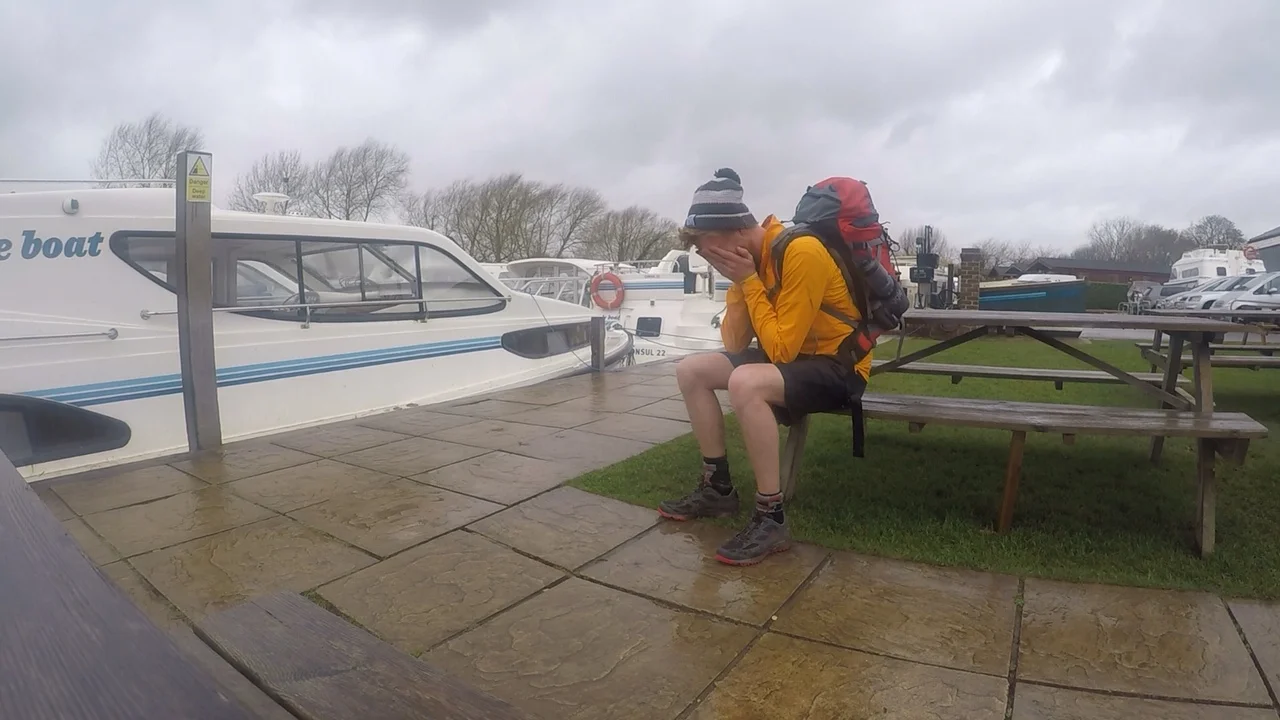The only way to succeed is through failing
The fear of failure holds many of us back from working towards our dreams. A lot of people get too scared to start anything because we are subliminally thinking about what can go wrong. Jago Hartland explores why the fear of failing is a much bigger deal than it sounds: it is the biggest dream killer.
As a teenager far from the model student, I feared failing more than most people. The idea of failing and being laughed at held me back from trying harder in my studies and all activities: heck! Don’t get me wrong, I still continued with some of my biggest passions in art and sports but I always held back believing that it was better to be average at something and not try than it was to try hard and fail. Popularity meant more to me than progressing on me. At fifteen years old I was presented with a life changing situation which was always going to leave an impact from then on. It took a bit of time, but after my diagnosis with cystic fibrosis, the weight of failure was lifted from my shoulders and it was simple- the things that should no longer matter to me, didn’t.
An image of Jago in a hospital bed, holding his thumbs up, wearing an oxygen mask
It wasn’t as if I woke up one morning and wasn’t scared of failure - on the contrary, I have naturally always been alarmed by the idea of failing like all of us. The only difference after my diagnosis was that I realized how precious our time is and that doing what we love and reaching for our goals is one of the most central things in life that we can pursue. In the space of a year, I went from being a student destined for bad exam results and being expended for setting off fire alarms, fighting and getting in trouble, to getting full A’s and B’s and being commended in my efforts all over. What changed? My idea of failure changed.
That year of my life may seem insignificant compared to recent accomplishments however I learnt my most valuable lesson. In that year of exams and cultivating myself, I failed more times than I had in any other year of my life. But wait, how did I fail more if I succeeded and bettered myself? The path to success is through failure. Once I failed an exam, it meant that I’d then revise, learn and succeed at passing the exam, and so on and so on. After realising that failure was fundamental to progression I challenged myself in as many ways as possible. Sure enough, I failed and succeeded and failed and succeeded.
An image of Jago sitting on a sofa at Yestival 2017 with 2 fellow YesTribers
An image of Jago and a group of friends in a beautiful mountain region (with lakes in the background)
An image of Jago at Yestival 2018 standing in front of the Say Yes More sign in the field of dreams
After realizing that failing is a step forward, the last five years have been hugely rewarding due to hard work and facing challenges. Fronting my own health scares has prepared me to be resilient in the face of failure. After being given the title of one the ‘Independent’s Inspiring Individuals’ in the National Happy List 2018 I was asked repeatedly by people how I managed to avoid failure and succeed. I explained that my most proud accomplishment has been fundraising just under £10,000 towards different projects and charities. This has included over thirty seven different events with numbers of the public ranging from one to ninety.
Some of the most demoralising failures I have encountered came from those events, 6 of those events made me break even with costs and only a few people turned up and another 3 of those events put me at a loss of over £30 per event. It doesn’t sound like a huge financial failure however when you consider the large amount of hours in organising, publicity and administration with charities: it was surely demoralising trying to work towards helping others and going wide of the mark. By this point, most people are shocked that charity events can fail after putting time and money into a just cause. Without those failed events and learning from them for future events and persevering, I wouldn’t have fund-raised my targets and I most likely wouldn’t have continued on to make the Independent Happy List: one of my proudest achievements. Learning from these events is one of the simplest of ways to describe how failing has helped me grow - other than explaining to get up every time you get knocked down.
An image of Jago at the start of the Thames Path, holding a banner saying “Cystic Fibrosis- a fight we must win”
The reason I am writing about my experience of failure is for a more recent motive. In the past five years I have taken on a number of charity and personal challenges that has pushed me further physically and mentally than I could have imagined. My most recent challenge was to run the River Thames of 186 miles in 6 days whilst sleeping homeless.
The 1st of March 2019 rolled around to start the challenge and I was well trained and well rested after a recurring knee injury. The plan was to cover 30-35 miles per day, eat lots and sleep rough until reaching the Greenwich barrier in London. As the first day approached, I covered 34 miles in dry weather and had eaten plenty and found shelter under a boat nearby until starting again in the morning. The second day felt sore on my legs and the drizzle made the path incredibly wet and slippery. I had covered 27 miles before having to stop due to the toll it was taking on my body, and after eating I slept the night in the closest church nearby. It was at 11pm, when I was struggling to sleep because of my legs screaming at me in pain, that I realised this challenge may be more difficult than anything I had planned for. An agonising third morning followed reaching 75 miles in two and half days down the River Thames and limping the previous 6 miles for two hours. Whilst sipping a coffee in a waterside café in Benson I realised that this would be the first event in five years that I won’t complete.
Failing the Thames Path- an image of Jago sat on bench with face in his hands
The main thoughts that raced through my mind which I couldn’t shut off from was thinking about cycling to Paris, climbing in the Himalayas, running mountains and marathons and believing that the River Thames was going to be easier in comparison. I would be lying if I said I didn’t shed a tear whilst taking an hour to massage my legs and make the decision to end the challenge. The worse part was that my mind was 100% there but I couldn’t physically cover more miles, later discovering I had done much more damage to my knee's than I initially believed.
Making the contact with my sister to come pick me up and then let the public know that I couldn’t continue the challenge felt like my most colossal failure. My sister Poppy said to me in the car ‘You are the only one who will be feeling this way, even the people who support you won’t care this much and would prefer you to be smart and look after yourself.’ I understood that any supporters would want me to look after myself and be smart but the thing that stood out to me was how much I cared about failing. The same person that started these challenges five years ago would have been angry at the fact I was beating myself up for not finishing.
Somewhere along the line I forgot why I started. Remembering that you should do something because you love that thing rather than to only focus on the completion is imperative to your pleasure in that area. The Thames was beautiful and the experience was amazing but my set purpose was more interested in completing the challenge – I failed to remember I was doing what I loved. There are many things I could have prepared better including: the planned distance, the weight of my rucksack, the terrain covering and how sleeping homeless will affect my recovery. I failed to take these factors into serious consideration and got carried away with challenging myself. Looking back already, I am proud to say that I have succeeded in learning from my mistakes and succeeded in reminding myself to do it for me as that is most important. The plan is to continue to face my challenges with a new relaxed approach I have re-adopted towards failure, which is succeeding.
There is no path in life that can keep you away from failing at something. J K Rowling, the famous children’s author once said: ‘“Some failure in life is inevitable. It is impossible to live without failing at something, unless you live so cautiously that you might as well not have lived at all—in which case, you fail by default.’ I hope we all take away the stigma around failure and that it is in the only way to succeed.
Jago Hartland
Image of Jago standing in mountains wearing orange jacket and smiling












